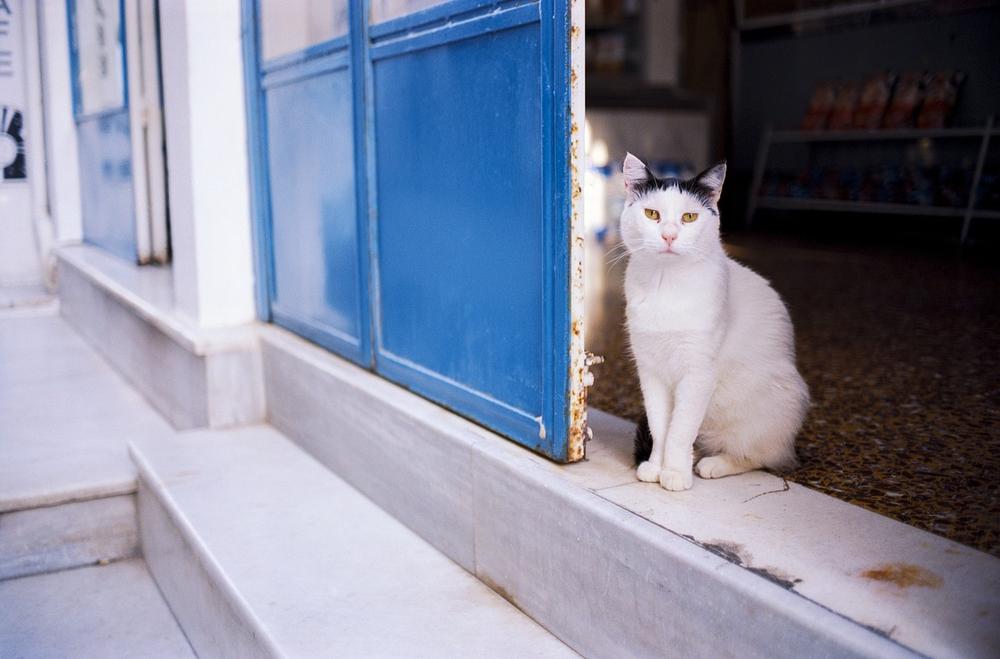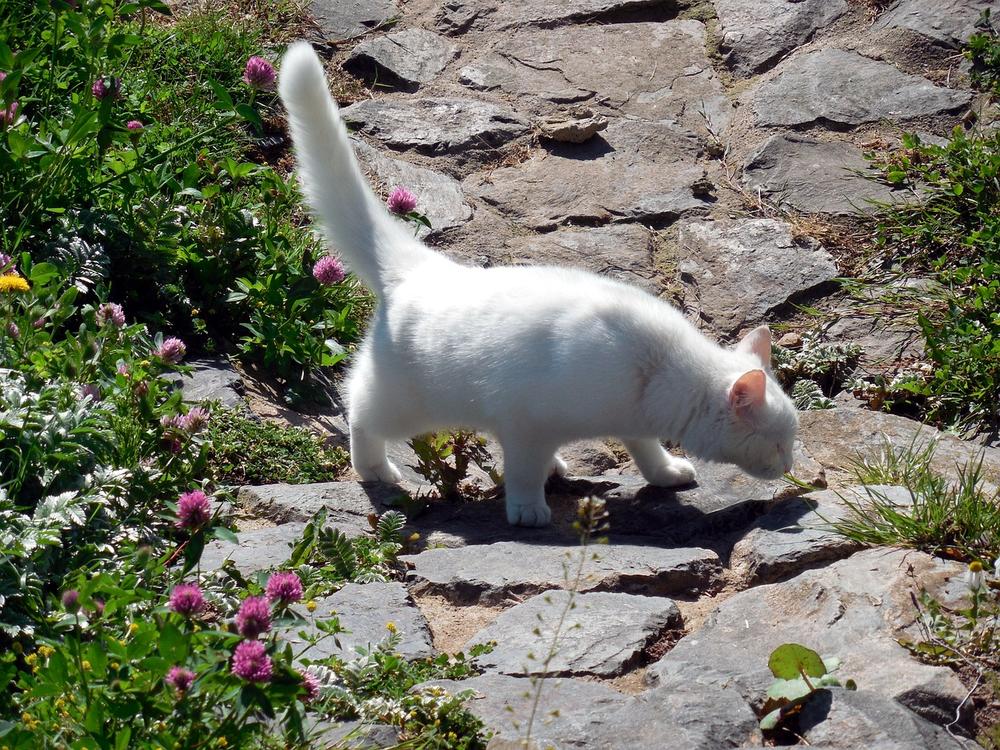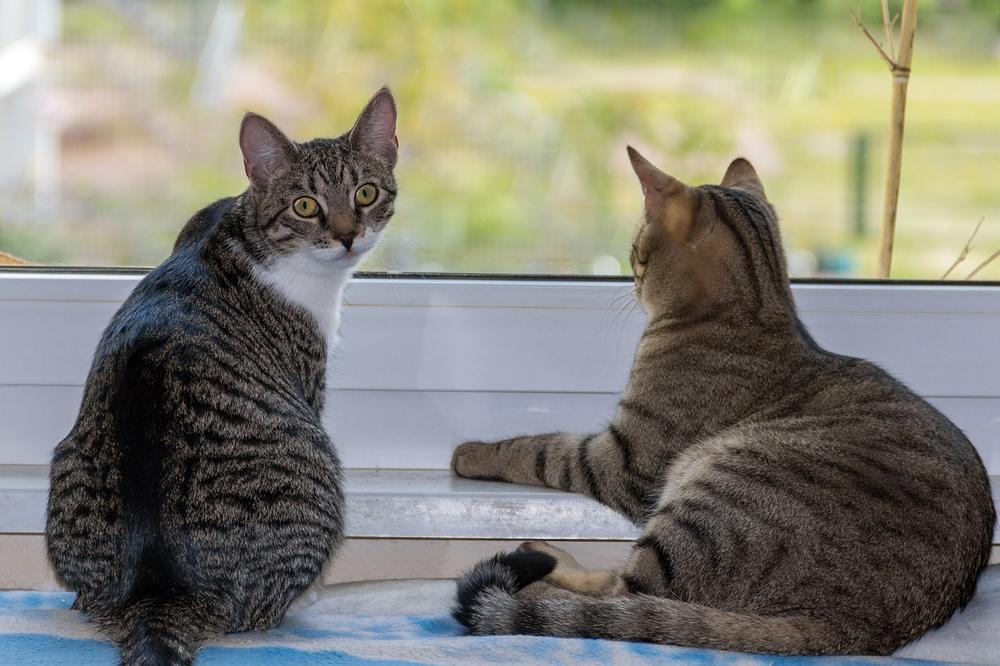Why Do Cats Wag Their Tails?

Are you captivated by the intricate language of cats and their tails?
Ever wondered why cats wag their tails?
Join me on a quest to unlock the secrets behind feline tail wagging. 😺
Prepare to delve into a world of curiosity, as we uncover the myriad reasons cats communicate through the captivating flicks and SWISHES of their tails.
Ready?
Let's embark on this tail-wagging journey together.
Cats Wag Their Tails When They're Feeling Confident, Scared, Excited, Annoyed, Hunting, and Secure
Different meanings of tail wagging in cats
You know, cats are mysterious creatures.
And let me tell you, their tails can be quite puzzling too!
When a cat wags its tail, it's not just about curiosity.
There is so much more going on, my friend.
A cat's tail wag can mean happiness or excitement, but it can also convey irritation, pain, illness, territorial marking, or even aggression.
To understand what your feline companion is trying to communicate, pay close attention to the direction, speed, and specific movements of its tail.
Specific tail wagging movements
Alright, let's break it down for you:
- If your furry friend's tail is slowly and subtly wagging with an arched back, it means they are curious and interested in exploring their surroundings. So keep an eye out for some feline investigations.
- When you see your cat's tail swishing from left to right, it means they are mildly annoyed. But if it quickly moves side-to-side, get ready for some playful antics.
- If your cat's tail starts quivering, it's a sign of excitement. They could be eagerly anticipating something.
- However, if you notice the tail thrashing or thumping, it's a clear indication of irritation or anger. So watch out, things might escalate.
- Continuous back-and-forth wagging speaks volumes of irritation, while tapping the end of the tail might indicate slight annoyance or contemplation.
- Don't be surprised if your cat wags its tail during playtime or while pouncing on prey or toys. It's all part of the fun, my friend!
Tail position and what it reveals
Now, let me spill some more tea:
The position of your cat's tail matters too.

If it's upright, it shows social confidence.
And a tail shaped like a question mark definitely means a happy feline.
But here's the thing...
If your kitty's tail is low and wagging, it shows fear or uneasiness. That's when they might need some reassurance from you.
You know, understanding a cat's body language goes beyond just tail wagging. You should also consider their in essence body position, activity level, and environment.
Cats are complex creatures, but with keen observation, you'll soon start speaking their language like a pro!
Main points I'll expand upon further down this article:
- When a cat's tail is straight up, it shows confidence and calmness.
- Low tail flicking may indicate unhappiness or a desire to be left alone.
- Tucking the tail between the legs indicates extreme fear or pain.
- Tail wrapping indicates a willingness to interact, but a wrapped tail around the body can signify fear or illness.
- Head butts are a sign of affection, while dragging the tail over someone represents trust.
- Twitching tail indicates concentration, while a fluffed-up tail signifies feeling threatened.
- The Halloween-cat posture with a puffed tail and arched back shows startle or fright.
- Tails become rigid and straight out when ready to pounce or need balance.
- Puffed-out hair on the tail and arched body indicate being startled and scared.
- The tip of the tail forming a question mark shape represents happiness or playfulness.
But here's something fascinating you may not know about cats and their tails.
It's not just the wagging or position that reveals their emotions, but also the subtle nuances in tail language.
So, what other mysterious messages can a cat convey through its tail?
Let's delve deeper into this feline communication code...
What Does It Mean When a Cat's Tail Stands Straight Up?
Cats talk with their tails, unlike dogs.
When a cat holds its tail up, it's asserting dominance over other animals or cats in its territory.
The elevated position of the tail signifies confidence and calmness in feline communication. Also, when a cat walks around with its tail held high, it conveys trust and comfort when interacting with other cats.
This shows that the cat feels safe and relaxed in its environment.
What if Your Cat's Tail Is Held Low to the Ground?
If your cat's tail is held low to the ground, it could be a warning sign.
This behavior suggests that the cat feels threatened or defensive, and it may even indicate impending aggression or fear.
On top of that, if your cat's tail is flicking quickly and aggressively while held low, they may be unhappy and want to be left alone.
When the tail is lowered below the level of the back, it suggests fear or anxiety.
And if your cat tucks their tail between their legs, it indicates extreme fear or possible pain.

So, if your cat frequently crouches with a tightly curled tail for more than a few days, it would be wise to schedule a visit to the veterinarian.
A tucked tail often signifies fear or pain, and the lower the tail, the more cautious or unsure your cat feels.
If you're worried about their health, it's best to take them to the vet for a proper diagnosis. 😺
And it gets better...
Not only do cats communicate through tail movements, but they also have other intriguing behaviors that reveal their thoughts and feelings.
So, are you ready to discover how cats use their ears to express emotions and what each position implies?
Let's dive into the fascinating world of feline body language!
Why Do Cats Curl Their Tails Around Their Bodies?
Cats curl their tails around their bodies to regulate body temperature and feel secure. It's their way of conserving warmth and creating a sense of comfort. However, tail wrapping can also indicate fear, defensiveness, pain, or illness, so you ought to monitor any unusual behavior.
So, cats and their tails...what’s the deal with that?
Well, for one thing, when cats curl their tails around their bodies, it serves a couple of purposes.
First, it helps them conserve body heat.
You see, cats are all about staying warm and cozy.
So, when they feel cold or uncomfortable, they might just curl that tail right up to retain some precious warmth.
But that's not all...
Secondly, it actually creates a sense of security for our feline friends.
It's like wrapping themselves up in a little tail blanket.
Aww, how cute is that?
And here’s another tidbit for you:
If your cat starts doing those head butts instead of tail wrapping, it's their way of showing affection.
Yep, love can come in many forms!
Oh, and pay attention if you spot your cat sitting or lying down with their tail wrapped tightly around their body. It could be a sign of fear, defensiveness, pain, or even illness. So keep an eye out for any unusual behavior.
On the flip side, if your furry pal decides to wrap their tail around you or give you a little tail drag, that means they trust and adore you.
They're showering you with affection...
Lucky you!
Cats sure know how to speak volumes with just their tails.
Funny creatures, aren’t they?
And if you've ever wondered why cats put their tails around their bodies, well, let me tell you, they have a whole language of their own.
But there's another interesting feline behavior you might be curious about—when your cat puts their paw on your face.
It's a common sight that can mean various things, from affection to attention-seeking or even marking territory.
If you want to unravel the secrets behind this adorable habit, check out my article Why Does My Cat Put Their Paw on My Face.
Trust me, you'll find the answers you're looking for.
The Reason behind Cats Fluffing Up Their Tails
| Tail Behavior | Explanation |
|---|---|
| Curled Up vs. Fluffed Up | Cats may curl up their tails when feeling relaxed or content, while fluffing up their tails can indicate fear, aggression, or arousal. |
| Tail Twitching | Rapid tail twitching often signifies irritation or annoyance. A slow, gentle twitch can indicate curiosity or excitement. |
| Puffed Tail | A puffed-up tail can be a defensive reaction to a perceived threat. It helps the cat appear larger and more intimidating. |
| Tail Straight Up | A straight tail, held high in the air, suggests confidence and a friendly approach. It can also be a sign of excitement or alertness. |
| Tail Swishing | Cats may swish their tails slowly from side to side when focused or concentrating. However, rapid and aggressive swishing may indicate irritation or aggression. |
| Wagging Tail | Unlike dogs, cat tail wagging is not always a sign of happiness. It could indicate annoyance, stress, or nervousness. Cats wag their tails more from the base than the tip. |
| Tail Tucked Between Legs | A tail tucked between the legs is a clear sign of fear or submission. This behavior usually indicates that the cat feels threatened or is in an uncomfortable situation. |
| Tail Puff with Arched Back | When a cat arches its back and puffs up its tail, it is displaying aggression and preparing for a physical confrontation. This behavior is often seen during fights or territorial disputes. |
| Rapid Tail Lashing | Rapid tail lashing accompanied by dilated pupils and an intense stare usually indicates extreme agitation or aggression. It is best to avoid approaching or interacting with a cat in this state. |
When your cat fluffs up its tail, it's like they're saying, Hey, back off.
It's a natural way for cats to make themselves look bigger and more intimidating.
Usually, cats fluff up their tails when they feel scared or want to show other animals that they mean business.
So, if you see your cat with a fluffy tail, it's a sign that they might be feeling threatened or trying to protect their territory. 👀
But here's another interesting tidbit for you:
When cats twitch their tails rapidly, it means they're fully focused.
Like when they see a tasty little bird outside the window.
They're locked in and ready to pounce. That twitching tail is a dead giveaway that they've got their eyes on something.

Have you ever seen a cat with a puffed-up tail and an arched back?
It's like they're doing their best Halloween-cat impersonation.
That posture actually means they're startled or frightened by something. They want to be left alone, so consider giving them some space.
Now, in the wild, cats use their tails to communicate all sorts of things. When the tail is straight out and held rigid, it often means they're getting ready to pounce or need balance.
So if you see your cat with a perfectly straight tail, tread lightly – they might be about to launch themselves at something!
And what about when the tip of the tail curls into a question mark shape?
That's a happy cat right there.
It's a playful gesture that shows they're in a good mood and ready to have some fun. Keep an eye out for that cheerful tail wag!
Understanding your feline friend's tail language is just one piece of the puzzle.
To take the best care of your cat, make sure you have pet insurance and a vet you trust. Don't hesitate to reach out with any questions or concerns – they're there to help you and your furry companion thrive.
And that wraps up today's article.
If you wish to read more of my useful articles, I recommend you check out some of these: Why Do Cats Slap, What Does the Position of Your Cats Whiskers Mean, Why Does My Cat Lick My Armpits, Why Does My Cat Bite Me When I Sleep, and Why Do Cats Bury Toys in the Litter Box
Talk soon,
-Sarah Davis